You know the overdone preacher story about the plant that grows underneath the soil for a decade without any visible sign of growth and then one day, like a phoenix rising from the ashes, it grows to 10′ tall?
(Trust me. It’s a thing.)
That was Videofruit in 2015.
It was a crazy year.
Every January I take a few minutes to pause and reflect on the previous year. Then I write a review and answer three basic questions (h/t to James Clear for this format):
I have a terrible memory, so being able to look back on last year’s review article is really fun and helps me remember how far we’ve come.
You should write your own Year in Review article. (If you do, post it in the comment section so everyone else can read it.)
Alright, onward!
What Went Well
Thing #1: We had a kid.
We had our first kid this year! (Woot!)
His name is Huck. Mom and child are both healthy.
(Except he seems morally opposed to taking family Xmas photos.)
He was born 5 weeks early which means he’s in the bottom percentile of all the measurable stuff (head, weight, height etc.).
But, honestly, who cares? He’s perfect. 🙂
Want to see more pictures? Ok, ok!
A photo posted by Bryan Harris (@bryan_harris_) on
For more adorable pictures go here.
His full name is Huxton Andrew Harris.
Also, just last week Stacy quit her job to spend more time with the Huck-man. So that’s fun!!
..
Thing #2: Platform growth
There are a lot of different ways to measure the overall growth of a platform, but I’ve broken it into 4 key categories:
1. Traffic
2. List size
3. # of customers
4. Revenue
(Note: There is actually a 5th category that I’ve completely neglected. But we’ll get to that later.)
First, let’s look at traffic.
These were our numbers for 2014:
Pageviews: 606,991
Sessions: 228,763
Users: 86,410
Here are the numbers for 2015:

Pageview: 1,251,418
Sessions: 439,827
Users: 202,155
I don’t track these numbers on a day-to-day basis, so seeing a 2-3x increase of pretty much every major metric is pretty cool!
The most popular blog posts of the year:
1. How to make $1,000 in the next 14 days without an idea
2. How to launch an online course and make $220,750 in 10 days
3. How I Made $10,000 in 24 hours With My First Product (Case Study)
4. Check out what SumoMe did to get more shares
5. Worry, Doubt and Fear (a video essay)
Next, let’s look at email list size:
These numbers are a little tricky. We started the year right at 10,000 email subscribers. We had actually peaked around 13,000 subscribers but then we cleaned the list towards the end of 2014. That brought the number down to 10,000.
As of December 31, 2015 we had 43,752 email subscribers on the list.
As of this writing, that is up to 47,363 subscribers.

However, we are planning an aggressive list cleaning for the first week of February, which will probably knock the list down to the 30-35,000 range.
Next, let’s look at total customers.
We didn’t track this number last year, so I don’t have anything to compare it against, but the total number of customers for 2015 was 945.
That includes the following products:
Product #1: Get 10,000 Subscribers (course)
Product #2:. Rapid List Building System (course)
Product #3: Various $10 products offered through PPC (e-books and mini-courses)
Product #4: Coaching Program
Finally, let’s look at total revenue.
Total invoiced revenue for 2014: $225,000
Total invoiced revenue for 2015: $900,000 (!!!)
^^^ Both of those numbers have me like…

Honestly, I don’t even know what more to write about this.
Both of those numbers are crazy.
..
Thing #3: Product launches
In January of this year I came up with the idea for the Get 10,000 Subscribers course (by following this methodology).
I spent January validating that my list wanted the course.
Then I spent February, March and half of April building the course. (It shouldn’t have taken that long.)
Then we launched the course twice. Once in late April and then again in November.
You can read the full recap of each of the launches here and here.
A few things about those launches:
1. Building the product is only 1/10th of the process.
If your goal is to actually make money from what you build, then building your widget is 1/10th of the equation.
Building an audience of people that give a crap about you is 5/10th of the work.
Validating and perfecting the product hypothesis before you build anything is 3/10th of the work
Developing and executing a proper launch plan is the other 2/10th.

Spend and budget your time accordingly or your results will suffer.
We also put together a pretty exhaustive launch checklist that you can download for free at the bottom of this post.
2. Product launches will completely cripple your team (and you can’t avoid it).
I would have never dreamed we could sell $750,000+ of a course that didn’t even exist this time last year.
For that I am extremely grateful.
However, it’s a lot of work.
Like a lot.
Like the most I have ever worked in my life, a lot.
I personally wrote a little over 35,000 words during the first 10-day launch window last May. For comparison’s sake, that’s about as long as most of Seth Godin’s books.
I was also completely stressed out the entire time.
I also did a pretty sub-par job of leading the team through the launch.
BUT, we learned a ton from the first launch and were able to make the second launch go much more smoothly.
And we have a goal to make the upcoming Spring launch of 10ksubs even more painless.
However, just realize and budget for having no life and no head space and to be completely overwhelmed during your first product launch. It’s normal.
Also realize, it won’t always be like that.
Next time will be better.
3. Product launches work really well.
The last big lesson I learned was that an open/close product launch works extremely well.
There is a 0% chance that we would have gotten 500+ sales and booked over $750,000 in revenue if the course would have simply been emailed out to our list a few times and linked up on a product page.
0%.
Wouldn’t have happened.
The urgency and focus that a 10-day open/close product launch provides is not able to be duplicated in any other format that I’ve seen.
4. We’ll launch 10ksubs twice a year forever-ish.
There are a lot of things I’m unclear on.
But one thing that I’m clear on is this: We’ll be launching the 10ksubs course twice a year (April and October) going forward.
Sure, we could work on evergreen webinars and all that crap. But why mess with something that’s working?
One of the biggest lesson I’ve learned in marketing is that you need to find what works and do more of it.
This works. So we’re going to do more of it.
Side note: I am intrigued by having a product we can sell year-round. And part of our goals for 2016 revolve around that. More on that in a bit.
..
Thing #4: Hired smart people
The next thing that went well was hiring smart people.
At the beginning of last year I had no real team to speak of. It consisted of an unreliable assistant, a few disjointed overseas contractors and that was about it.
That changed in 2015.
Although we are a long way from being perfect, I’m incredibly happy with the team that has developed around Videofruit.
There are 6 primary people I brought in this year:
1. Technical Assistant
2. Admin Assistant
3. Affiliate Manager
4. Coach
5. PPC Manager
6. Dean of 10ksubs
All of these folks are part-time and work between 10-30 hours per week.
Here is a short breakdown of each:
Technical Assistant: His name is Jeff. He handles everything technical.
For example, right now we’re implementing several new paid advertising funnels.
What we’ll do is jump on a 15-minute Skype call where I’ll share with Jeff my high-level vision. Then he’ll take that vision and execute it. He’ll set up the landing pages, email sequences, shopping cart pages, and hook all of that up into one cohesive working thing and then send it over for me to review.
Yes, it’s just as awesome as it sounds.
No, you can’t have an intro to Jeff
Find your own Jeff. 🙂
This position is one that I never hear mentioned. But in the early stages it’s probably the most valuable position you can hire for (even before the ever so popular VA). That’s not to discount anybody else’s position; that’s just one of the biggest bangs for your buck, one of the biggest time-savers you can possibly get.
(Note: I hate the job position title I’ve given to everyone here. I just suck at clever names and this is the best I had.)
Administrative Assistant: Her name is Jessica. She does all the dirty work.
I used eaHELP to find Jessica. I’ve used quite a few admins in the past, all by cheap outsourced Upwork-style sites.
This time I paid good money to find someone and found a rock star. She handles all customer support, pays the bills, does random stupid stuff for me, handles our Facebook groups, helps me with my personal email, follows up with failed charges, manages the coaching program and a ton of other things.
Jessica is awesome.
Find you a Jessica.
Affiliate Manager: His name is Darrell Vesterfelt.
Darrell handled the affiliate portion of the fall launch of 10ksubs. He recruited affiliates, wrote swipe copy, set up the affiliate portal, managed communication throughout the launch and overall was a baller.
Unfortunately, he took a full-time job elsewhere over the holidays and won’t be with us going forward.
We’ve hired Tom Morkes to work with us for the Spring launch of 10ksubs. I’m excited about that!
Coach: His name is Stu McLaren.
Stu is one of the smartest and most generous people I’ve ever met. Stu has done 8 (or more) 7-figure product launches, he invented and grew WishList’s members to over 50,000 and has been working with Michael Hyatt over the past 3 years to grow Michael’s platform to a juggernaut.
I’m a huge Stu fan. When I found out he offered a regular coaching program, I jumped at the opportunity to get in.
He’s not cheap though.
We paid $10,000 for one day of consulting with him and pay $4,000 per month for ongoing coaching.
However, we saw that coaching produce a 20x ROI in the first 3 months.
PPC Guys: Their names are Ethan and Tony.
One of our big goals this year is to figure out how to make PPC work for us. (More on that in a bit.)
But after my foray into Facebook ads late last year, I knew that I couldn’t master PPC by myself. It’s way too complex and needs a lot of babysitting to perform at a high level.
So, I went out and hired two of the smartest people I could find.
Tony manages Facebook ads.
Ethan manages Instagram ads.
We’re still early on with these two, but they’ve both surpassed expectations in the first few months we’ve worked together.
I’m excited to see what the rest of 2016 brings.
Dean of 10ksubs: His name is Jeremy
Technically Jeremy didn’t start until 2016, but we started talking last year and solidified his position in late December.
Anyhow, if 10ksubs split out as its own company, Jeremy would be the CEO. His single goal is to make 10ksubs the best course on the planet about list building. His job is to wake up every day thinking about the product and students.
How can we make the curriculum better?
How can we get more students to 100, 1,000 and 10,000 subscribers?
How can we make our support for the product more awesome?
Those three questions are what he spends his days thinking about. To turn 10ksubs into the product it can be, it requires someone’s sole focus, and that person can’t be me.
One big lesson I’ve learned this year is that if I try to do everything, it all just sucks.
So, while 10ksubs takes up a large portion of my bandwidth, I want to dedicate even more time to it. And the best way to do that is by hiring someone to work directly with me on that.
That’s Jeremy.
I’m realllllly excited about where the course is headed this year under his direction.
..
Thing #5: Finding dudes doing the same thing as me (and hanging out regularly)
Most people call this a mastermind, but I hate that word.
However, “Finding dudes doing the same thing as me and hanging out regularly” doesn’t quite have the brevity.
Anyhow, early last year I was finally convinced to join a group with a few guys I kinda sorta knew. It took some arm twisting but I finally submitted to the peer pressure.
And I’m extremely grateful that I did.
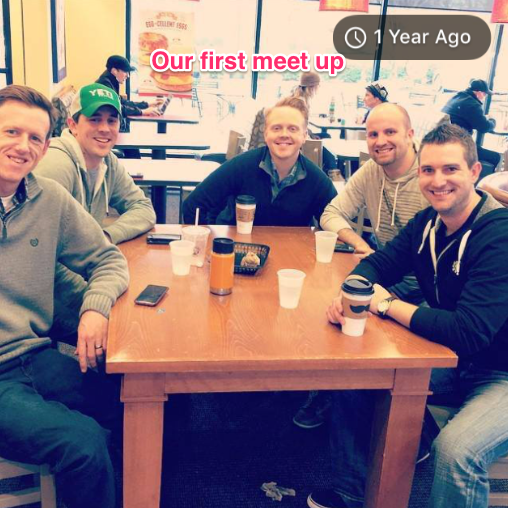
Having a group of people who speak your language, who are doing similar things as you and who you can go to for support, advice and just general amusement on Slack during the day is a good thing.
This is how our group works:
1. There are 5 of us in the group.
2. There is a Slack channel where we hang out and chat during the day.
3. We meet once a quarter in person for 2 days.
Four out of the five guys in the group live in Nashville, so we also tend to get together throughout the week occasionally to hang out with the families and such.
That’s nice.
My advice on finding (or forming) a mastermind:
1. Find your people: Not everyone does business or approaches business the same way. Find the people you like hanging out with. Find people you actually enjoy being around. Don’t be sad if you find out those are different people than the folks you’ve always looked up to.
There is a good chance, that the people you look up aren’t “your people.”
2. Do 1:1 first: Before you try to get people to commit to being part of a group, start with a simple Skype call. Jump on, chat and talk about business.
If that goes well and you hit it off, then set a time to chat once a month.
Do that with 4-5 people you know who are at a similar spot as you or slightly ahead of you.
3. Collect your people: Once you’ve gone a few months with a handful of folks doing Skype calls 1:1, then float the idea out there of bringing them all in together in one group.
..
Thing #6: I met people who do cool work.
One cool thing that happened this year was getting to meet a bunch of folks that I look up to.
People whose books I’ve read, blogs I’ve followed, courses I’ve bought or Twitter accounts I’ve stalked.
Here is a quick list:
1. James Clear
2. Nathan Barry
3. Jeff Goins
4. Michael Hyatt
5. Stu McLaren
6. Whitney English
7. Darrell Vesterfelt
8. Allison Vesterfelt
9. Ray Edwards
10. Bob Lotich
11. Donald Miller
12. Crystal Paine
13. Tim Grahl
14. Jason Zook
15. Caroline Lesko
16. Pamela Wilson
Note: There is a 100% chance I forgot someone here. Sorry if that’s you. 🙂
..
Thing #7: Seth Godin commented on this blog.
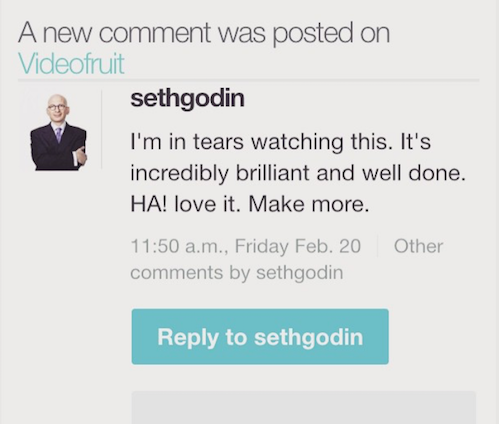
I don’t even…
…
..
.
Thing #8: Trips
2015 was a solid year for trips. It didn’t have the variety or international flair as 2014 (I’ll blame pregnancy and the new kid on that), but it was still pretty fun.
Trip #1: Went on my first-ever camping trip with my dad.
We’re making it a yearly Harris tradition.
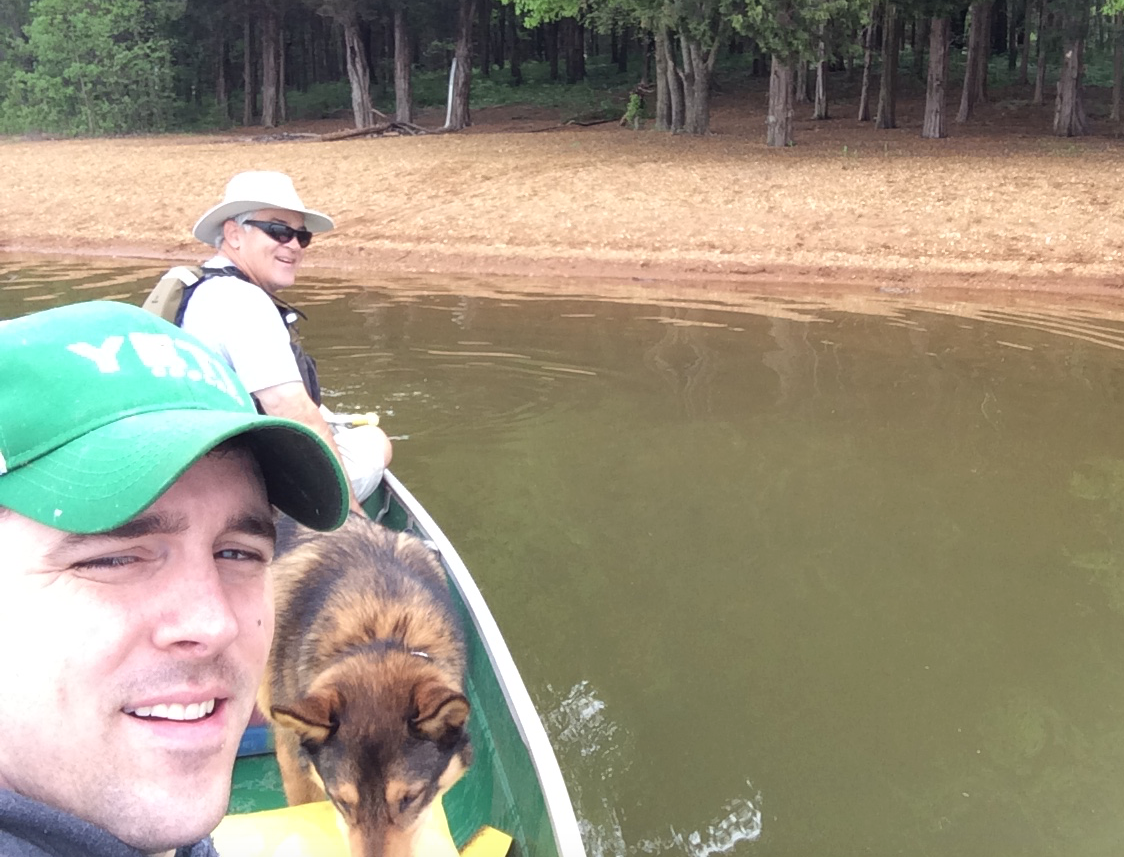
Trip #2: Went to Death Valley to watch LSU vs. Auburn with my buddy Patrick.

It was (seriously) 120 degrees on the field during this game.
If it looks like we are about to die of heat stroke, that’s because we were.
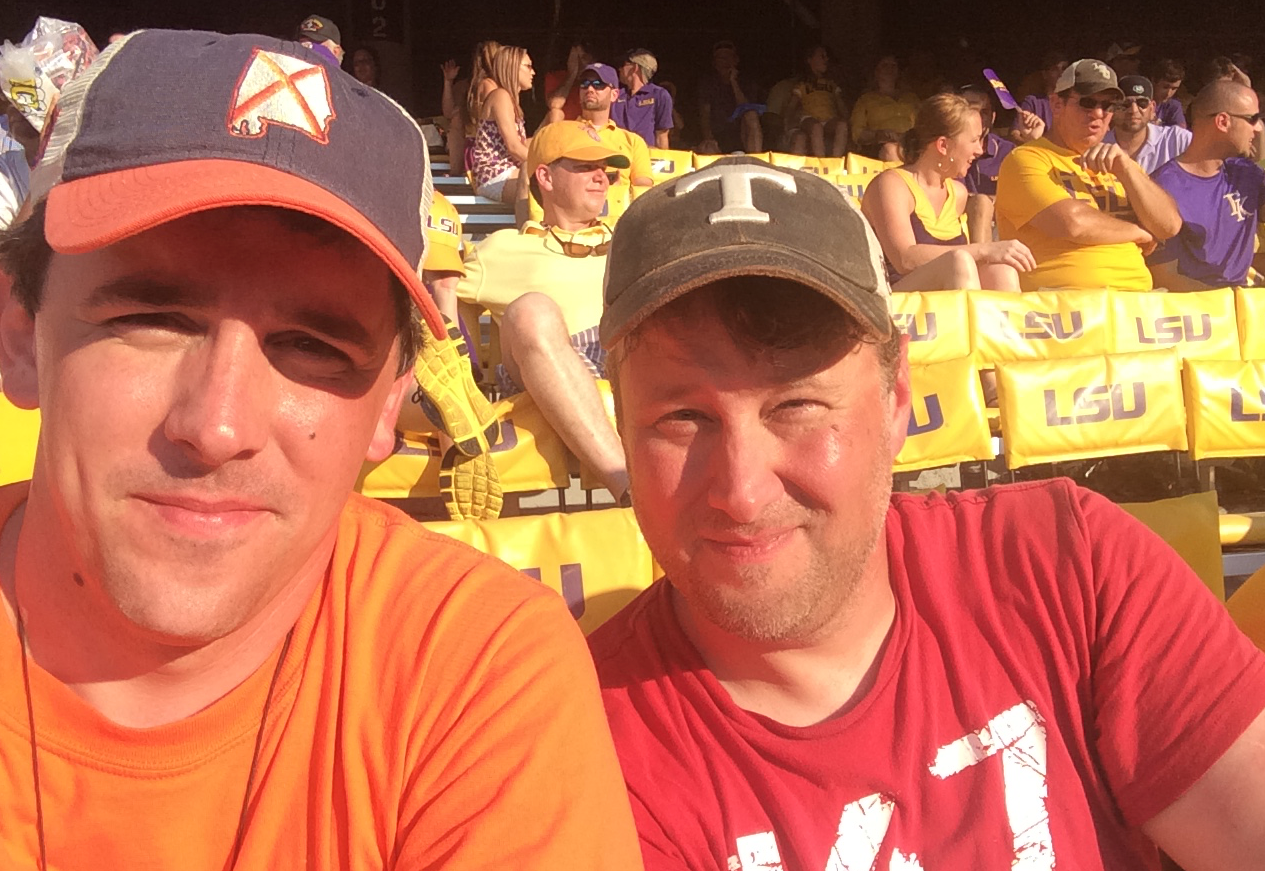
Trip #3: Spent a week at the beach with (a very pregnant) Stacy.
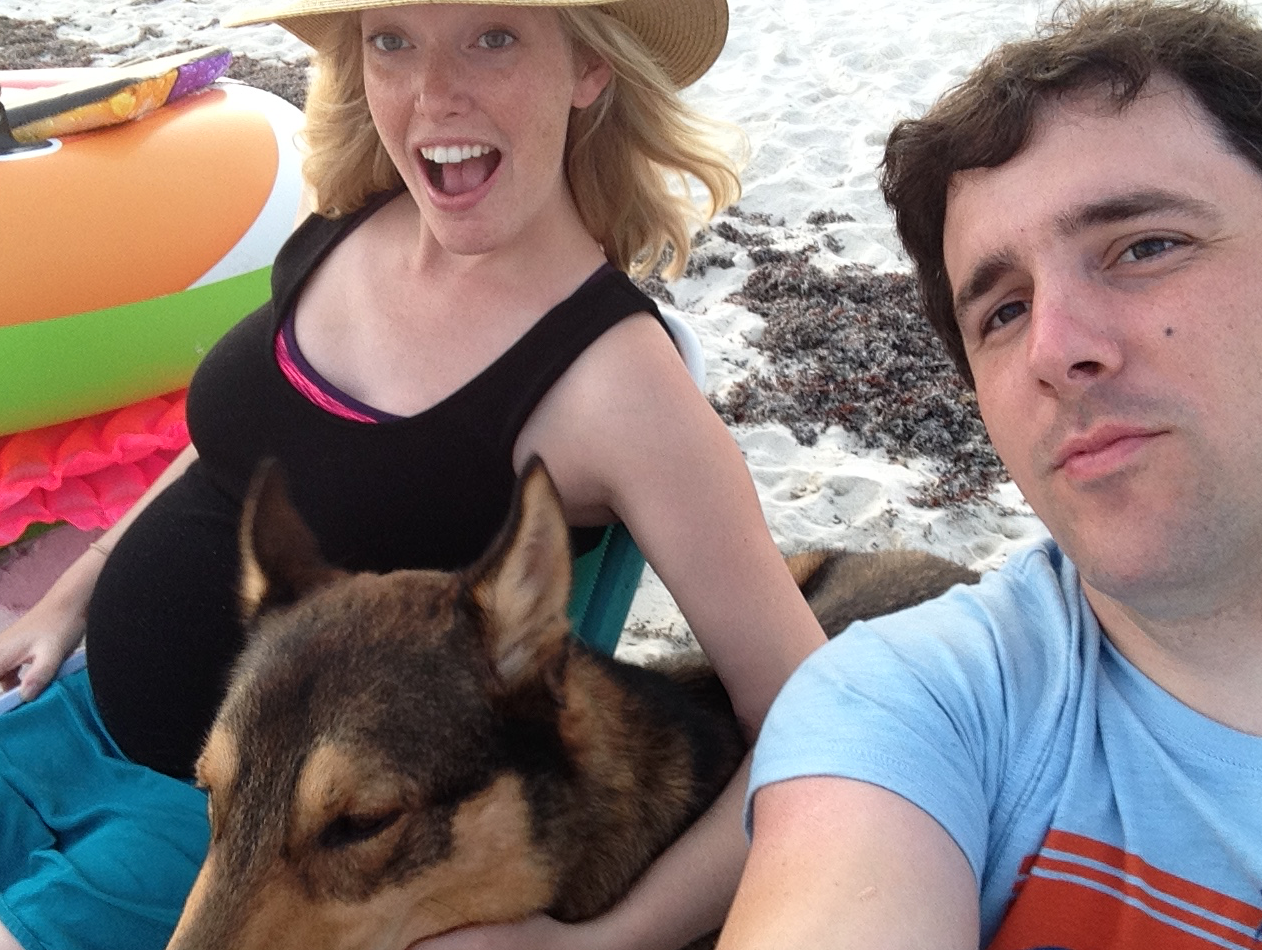
Trip #4: Took the mastermind group to their first-ever SEC football game (Auburn vs. Kentucky).
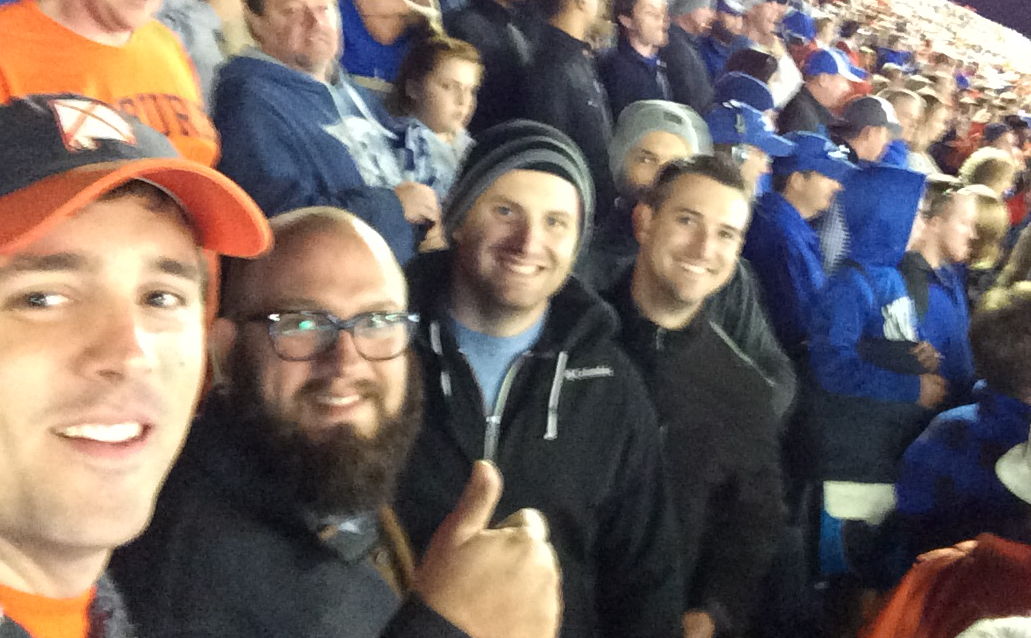
Trip #5: Spent a weekend in Jasper, GA at a BALLLLLLER AirBnb.
Trip #6: Went to my very first Iron Bowl (Auburn vs. Alabama) football game.

What didn’t go well
Thing #1: Financial tracking and management (for the business)
Alright, now let’s talk about the crap that sucked this year.
I’m a pretty optimistic dude, so coming up with a bunch of things that went wrong is pretty tough for me. Not because I’m perfect (far from it) but because I tend to delete that stuff out of the memory bank ASAP.
So problem #1 this year…business finances.
For the first two years of Videofruit I’ve been in startup mode. Down and dirty. MVP. Scrappy.
But last year we generated just over $900,000 in sales. And I didn’t really have great systems in place to track all of that.
Currently my accounting system looks like this:
- Categorize transactions daily-ish.
- Talk to the tax guy a few times a year.
That’s about it.
Which is fine when you’re doing $200k and have 2 products and business is super simple.
But business is more complex now. So the financial back-end needs to scale up.
There are many numbers concerning my business that I am completely clueless on. So much so, I don’t even want to name them here.
So…what am I doing about it?
I hired the smartest accountant I could find. Her name is Raquel and she specializes in online teaching-based businesses like Videofruit.
She’ll handle affiliate payouts, cash flow projections, weekly reconciliation with all the accounts (merchant accounts, PayPal, affiliates, main bank account, etc.) and serve as a quasi-CFO role for me.
She’s in the process of getting everything set up for 2016 and beyond right now. I’m very excited to have her on board.
Confidence level in this working: 85%
..
Thing #2: Content planning and continuity
Here is the issue: I don’t really have much of a content plan. Like at all.
My publishing schedule looks like this…
1. “Hmmm…that would be cool to write about!”
2. Write. Write. Write. Write.
3. “Oh crap, it’s Friday!”
4. Kill myself to finish the post.
5. Email everyone with a link.
6. Take a deep breath.
7. Realize it’s Wednesday again.
8. Repeat step 1 thru 6.
That’s become stressful and I think has hurt the consistency and quality of the content overall.
What I need is a plan that allows be to be spontaneous with content when I need to be but also rely on an overall framework and schedule when there isn’t a spontaneous content opportunity.
So here is my plan for that:
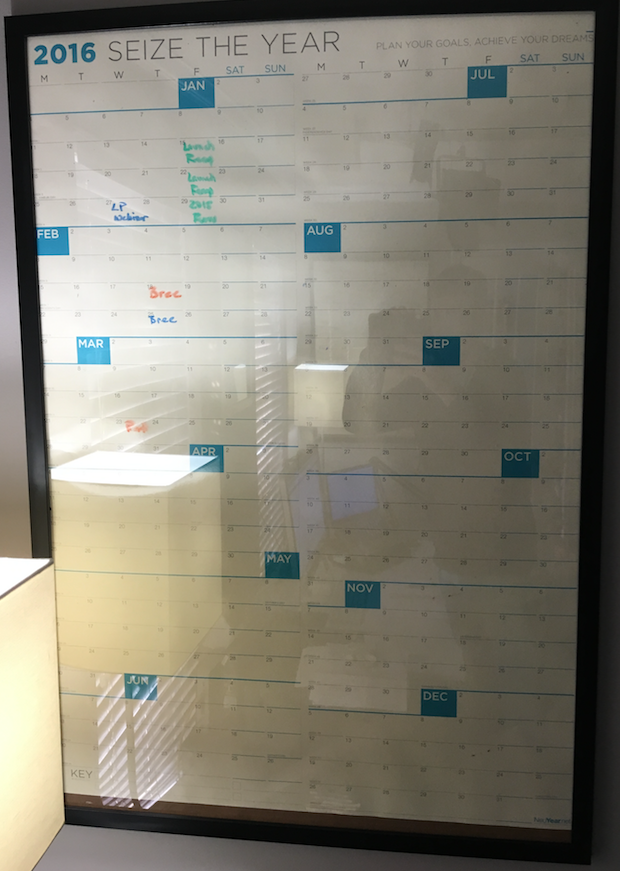
I bought a second 2016 calendar, hung it in my office and started writing out topic ideas on it.
The general premise is this: If the calendar is hanging up in my office where I see it all the time, I’ll more easily be able to conceptualize how all the different pieces of content can flow together. I can also do a better job of planning it since it’s so visual and in front of me all the time.
Confidence level in this working: 20%
…
Thing #3: Tracking customer success
Alright, this is a big one….
I can tell you what my gross revenue for 2015 is.
I can tell you what my list size is.
I can tell you what my opt-in rate is.
But you know the one number that I don’t know? How many students reached their #1 goal last year.
Think about that for a minute. If my job is to help people reach their goal (to grow their email list), yet I’m not even tracking that, how on earth am I supposed to improve or even know if I’m being effective?
Sure, there is anecdotal evidence. People email in with cool stories and whatnot. But shouldn’t we track customer success just as religiously as we track our sales numbers and email list size?
It’s insane that I don’t do that.
We had just over 500 people enroll into 10ksubs and I have no idea how many reached 100 subscribers, 1,000 subscribers or 10,000 subscribers.
That’s insane!
So here is what we’re going to do about it…
What’s coming in 2016?
A few years back I found an incredibly simple goal-setting framework that I’ve fully adopted.
It works like this:
• 1 big goal
• 3 medium goals
• All the other crap
At the beginning of each year I’ll pick out a new ONE big goal and THREE medium goals. Then each quarter I’ll look at my progress towards the yearly goals and set some intermediate goals to work towards.
Then, every Monday, I’ll look at the yearly goals and set one big goal and three medium goals to work towards my quarterly goals.
Make sense?
If achieving your goals was climbing Mt. Everest, I went through the first 30+ years of my life staring at the peak of the mountain the entire time. The problem with starting at the big goal the entire time you hike is you eventually fall into the 100′ crevice right in front of you and you never see it.

If instead of not looking at the mountain the entire time, you spent your time worried about the next 500′ in front of you and every so often looked up to make sure you were still on the right mountain, you would make much quicker progress and your chance of death would go down drastically.
That’s how this goal-setting formula works.
One Big Thing. And Three Medium Things.
Yearly. Quarterly. Weekly.
Focus on the weekly.
…
Ok, so my goals for the year are this:
One big goal:
#1 Launch 10ksubs twice, have fun doing it and get 100 students to 1,000 subscribers (in documented case studies).
Medium Goals:
#2: Get 100,000 active subscribers on my list (active = average of 5-10% CTR).
#3: Create one new product per month (8 total minus sabbatical and launch months).
#4: Master PPC advertising.
Here is a quick video walkthrough of each goal and my thoughts on executing each one:
PS: What is your #1 goal for 2016? Leave it in the comments below. And challenge yourself to make one element of that goal be a selfless goal.